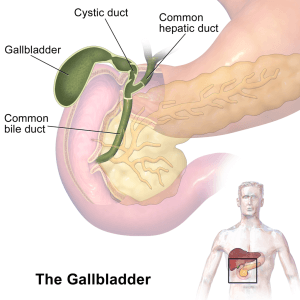What is the Gall Bladder For Anyway?
Tucked beneath your liver like a little green bean-shaped pouch, the gall bladder might be small—but its job is mighty! The gall bladder stores and concentrates bile, a powerful digestive fluid produced by the liver. When you eat a meal, especially one with fats, the gall bladder gets a message from your nervous system to squeeze, releasing bile into the small intestine. This bile acts like soap, breaking down fats into digestible bits so your body can absorb vital nutrients like vitamins A, D, E, and K.
Bile isn’t just a fat-buster—it also helps carry waste products out of the body. Without it, digestion would be sluggish and toxic build-up could occur. Pretty important for such a small organ, right?
Chemicals at Play
The key chemicals in bile include bile salts, cholesterol, and bilirubin. Bile salts are the main players in fat digestion. Cholesterol is a natural part of bile, but when levels get too high, stones can form. Bilirubin is a waste product from the breakdown of red blood cells. These elements work together like a digestive superhero team—when they’re in balance!
Nerve Supply & Spinal Connection
Your gall bladder doesn’t work in isolation—it’s wired into your nervous system. Specifically, it’s innervated by the thoracic spine, most notably around T6-T9. These spinal nerves, along with the vagus nerve, help regulate gall bladder contraction and communication with the digestive tract. That’s one reason chiropractic care matters: misalignments or subluxations in this area can interfere with nerve flow and gall bladder function.
Habits That Hurt—and Help
Too many processed foods, low-fiber diets, and high-fat meals can overwork or stagnate your gall bladder. Long-term stress can also contribute by throwing off the parasympathetic nervous system, which helps regulate digestion. On the flip side, you can support gall bladder health by:
- Eating a high-fiber, whole-food diet
- Staying hydrated
- Managing stress through movement, mindfulness, and chiropractic care
- Including healthy fats (like olive oil and avocados) in moderation
- Avoiding crash diets that cause rapid weight loss
Keep That Gall Bladder Glowing
Your gall bladder might not be flashy, but it’s essential for feeling vibrant and energized. By making small daily choices and keeping your spine aligned, you’re not just supporting digestion—you’re building lifelong vitality. Let’s show some love to this unsung hero of the digestive system!
🧠 References
- Biliary System Anatomy and Functions
This article from Johns Hopkins Medicine explains the anatomy and functions of the biliary system, including the gallbladder’s role in storing and releasing bile to aid in fat digestion.
https://www.hopkinsmedicine.org/health/conditions-and-diseases/biliary-system-anatomy-and-functions - Bile: What It Is, Where It’s Made & What It Does
The Cleveland Clinic provides an overview of bile, detailing its production in the liver, storage in the gallbladder, and its essential role in breaking down fats during digestion.
https://my.clevelandclinic.org/health/body/what-is-bile - Gallbladder: What Is It, Function, Location & Anatomy
This resource from the Cleveland Clinic discusses the gallbladder’s function, its location beneath the liver, and its role in storing bile to assist in fat digestion.
https://my.clevelandclinic.org/health/body/21690-gallbladder
